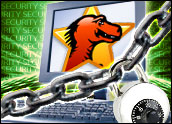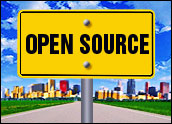With financial and technical support from Hewlett-Packard, Foundry Networks and other leaders in Silicon Valley, students at the University of San Francisco (USF) this week launched a grand project to create an instant, do-it-yourself supercomputer.
But technical problems with some of the PCs disabled the effort to link 700 computers, using Linux, in the USF health and recreation center.
The virtual supercomputer — FlashMob I — did perform 180 billion mathematical operations per second, solving complex mathematical problems, but the experiment fell short of a top record.
Japanese Record Stands
This global record to beat, set by a Japanese supercomputer, achieved 35 trillion mathematical operations per second. Still, supporters were enthusiastic about the FlashMob I effort despite not approaching the record.
“FlashMob I is a striking example of the new applications people are creating for high-performance networking,” Ken Cheng, vice president of Foundry Networks, told LinuxInsider.
Those behind the project said their belief in the potential of open-source computing is not diminished.
“Our philosophy, one which FlashMob epitomizes, [is] that open, industry-standard technologies deliver more power and choice at reduced costs for the technical computing market,” Stuart Laidlaw, director of business development at HP, told LinuxInsider.
Virtual Grid Grows
The scene at the USF Koret Health and Recreation Center was like something out of the backdrop for the movie “The Matrix.”
Tables were crammed with computers — both PCs and notebooks — linked by networking cables to an array of concentrator cabinets. Network setup began last week, on April 2nd, and the event itself began April 3rd. Volunteer participants arrived at different, preset times and were each given a FlashMob I CD-ROM containing software designed to facilitate the computing project.
That software was a modified Linux kernel. Original code was rewritten to facilitate bootstrapping of the PCs for the event. To reach a high mark in the Linpack benchmark — a benchmarking standard — the planners wanted all computers in the experiment to collaborate simultaneously on analyzing a set of mathematical calculations.
The hard drives of the computers were not engaged, as the software ran exclusively from the CD-ROM drives, providing a measure of data-security protection for the volunteers and their computers.
Once each PC connected to the network, it self-configured and started processing requests from a central server. As each new computer came online, the power of the virtual grid computer grew.
Massively Parallel Supercomputer
The project was supposed to be a virtual version of a massively parallel supercomputer, but many of the donated computers failed, and the calculation speed reached by the computing enthusiasts never came close to the international record.
Raw data from the experiment was made publicly available on the Internet at flashmobcomputing.org. The site remains online to facilitate further research in this area of open-source computing and to prepare for an upcoming event, FlashMob II, a follow-up to the weekend event.
Long-term, the program’s backers hope that regular people, not just computer scientists, can use free, available grid computers to study global warming or breast cancer or even to host an electronic chess club around the world.
“Use of clustering technology is rapidly moving beyond classic supercomputing and entering mainstream and commercial applications,” said Nan Boden, executive vice president of Myricom, another technical and financial supporter of the college campus event.






































